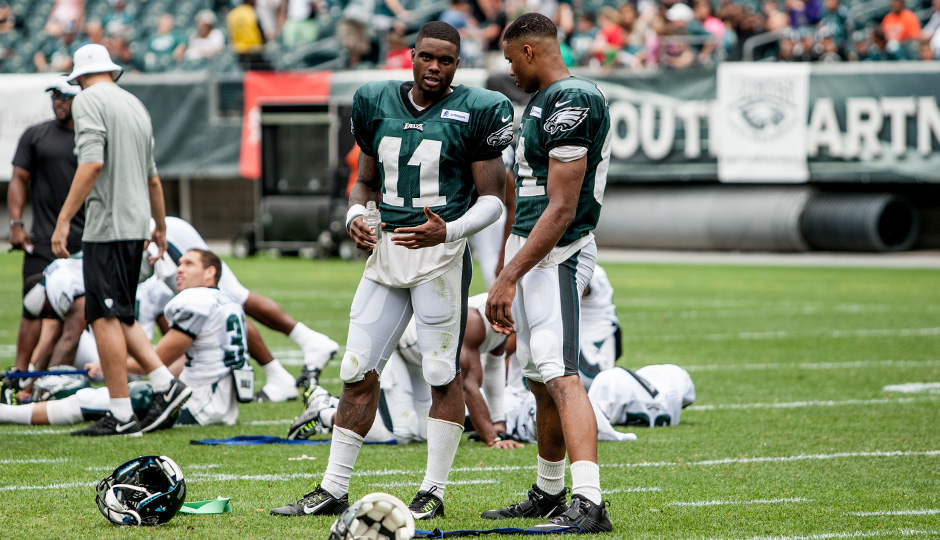Matthews, Huff And the Wide Receiver Class
The 2014 wide receiver class was billed as one of the best and deepest in the history of the NFL draft. Sixteen wideouts were selected in the first three rounds, two of them by the Eagles. So, how are the highest of the highly-touted receivers doing through eight weeks? And how do Jordan Matthews and Josh Huff stack up? Let’s take a look:
Matthews, the seventh receiver taken, ranks fifth in catches and seventh in yards per game. Working exclusively out of the slot, the Vanderbilt product has played 325 of a possible 533 snaps, or 61 percent of the time.
Does he keep an eye on what the rest of the rookie class is doing?
“I think everybody does in a way. You can’t help but watch games and look to see what other guys do,” said Matthews. “But you can be blinded a little bit because there are certain schemes guys play in, there are certain roles guys have early on that might be different than your role, then there’s how each person’s team is doing. If there is a rookie that has four catches but they’re four big catches on a team that’s undefeated then he’s probably doing better than the rookie that has no wins as a team but they’re throwing to him all the time. Who’s to say who is better?”
To Matthews’ point, there are several factors to consider. Latimer, for example, is part of a wide receiving corps in Denver that consists of Demaryius Thomas, Emmanuel Sanders and Wes Welker, among others, and plays for arguably the best team in the league. Meanwhile, Robinson is putting up good numbers for the 1-7 Jaguars, who have considerably less talent.
Depth and quarterback play are two factors that need to be considered. The same goes for injuries. Huff was sidelined early on with a shoulder injury and has appeared in just three games so far. He struggled against the Cardinals and committed a costly turnover near the goal line while trying to get extra yards. Chip Kelly called him over from the bench afterwards to snap him back into focus. Jason Peters came over to offer words of encouragement moments later to a young player going through growing pains.
“It’s really important any time you’re going to have teammates that are going to be behind you regardless of your mistakes,” said Huff. “It speak volumes about what this team stands for. We win and lose as a team. My extra effort gave the ball up towards the end of the play. That’s just something I’ve got to learn from and bounce back from.”
Huff’s tough day was contrasted by the performance of Brown (selected five picks after Huff), who scored the game-winning 75 yard touchdown.
A couple receivers, like Watkins and Benjamin (selected by the Panthers two picks after the Eagles drafted Marcus Smith), have flashed their star ability already. Some will take longer to develop, and others might not pan out. The common thought is that it takes three years to properly judge a draft class, and this one is just eight weeks deep. It will be interesting to see how it plays out, particularly when it comes to the Eagles’ selections.
“There’s different ways to look at it,” said Matthews. “Whenever I watch a game, of course if a rookie wide receiver is playing I’m going to check it out. But at the end of the day I focus on myself and my team and what we’ve got to do.”
